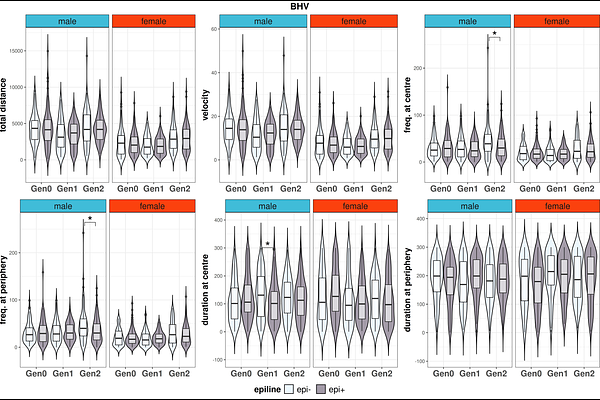Transgenerational transmission of an environmental modification in quails: changes in phenotypic variance components across three generations

Transgenerational transmission of an environmental modification in quails: changes in phenotypic variance components across three generations
Rousse, S.; Leroux, S.; Gourichon, D.; Calandreau, L.; David, I.; Rau, A.; lagarrigue, S.; Zerjal, T.; Pitel, F.; Eynard, S. E.
AbstractWhile epigenetic variations can contribute to shaping phenotypic diversity, it can be challenging to isolate and quantify the portion of trait variability under epigenetic influence. The present study compares the phenotypic response for different phenotypes of two epilines of Japanese quails (Coturnix japonica), with similar genetic structure across three generations following an initial genistein ingestion in the ancestors diet. Linear and linear mixed models were fitted to extract the fraction of variance allocated to multiple factors such as dam, family, sex, reproductive status and epiline. The latter was found to be significantly associated with body weight and with heart, abdominal fat and testicle weight adjusted by body weight. The proportion of phenotypic variance explained by the epiline progressively increased from the first generation (G0) to the last (G2), leading - for example in body weight at slaughter - to an average difference for adult males and females in G2 of 9 grams and 14 grams respectively, between genistein treated offspring (epi+) and controls (epi-). These findings suggest a possible transgenerational effect of the initial diet disruption. In tissue weights, production and behavioural traits, the effect of the epiline accounted for smaller fractions of phenotypic variability and overall large residual variances were observed, underlining the complex nature of the analysed traits. This innovative experimental design allowed for a characterization of the impact of transgenerational effects on a variety of phenotypic traits, which will be useful for prioritizing traits for future genetic and epigenetic association studies.